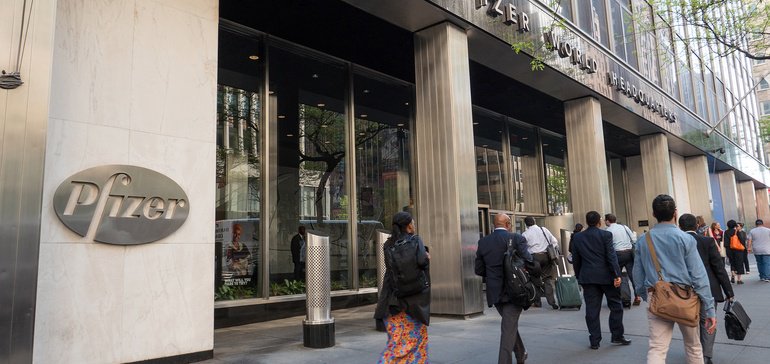The U.S. opioid crisis breathed new life into clinical development of the nerve-growth factor (NGF) inhibitors tanezumab and fasinumab. The drug class had been nearly dead a decade ago thanks to issues surrounding skeletal side effects, which for drugs hoping to treat arthritis pain is a clear safety worry.
The Food and Drug Administration lifted a five-year clinical hold in 2015 that allowed Pfizer and Lilly to resume trials of tanezumab along with Regeneron and Teva’s fasinumab. With the risk of addiction from opioid-based pain relievers so high, the FDA has become less skeptical of the NGF class and its side-effect profile.
Last week’s readout of top-line data from a head-to-head trial of tanezumab against NSAIDs changes that dynamic.
The trial tested two doses of tanezumab, 5 mg and 2.5 mg, and compared how they performed against naproxen, celecoxib or diclofenac. On efficacy, the results were mixed: after 16 weeks of treatment, patients in the 5 mg arm met two of three primary endpoints, experiencing statistically significant improvements in pain and physical function. Patients’ overall assessment of their arthritis was not statistically different than NSAIDs, however.
Patients in the 2.5 mg arm did not show a statistically significant benefit on any endpoint, Pfizer and Lilly said.
A composite safety endpoint that measured all joint-related events showed an imbalance between trial arms. Just over 7% of patients in the 5 mg arm had such an outcome, compared to 3.8% in the 2.5 mg arm and 1.5% of NSAIDs patients. The majority of those events were rapidly progressing osteoarthritis.
The tanezumab data “might signal the end” of the NGF class in arthritis, wrote SVB Leerink analyst Geoffrey Porges in a note to clients. So far, fasinumab data have been fairly clean, as a Phase 3 trial found only a 2 percentage point greater rate of arthropathies identified in patients taking it when compared to placebo.
During Regeneron’s fourth quarter earnings call, George Yancopoulos, the company’s top scientific executive, said researchers now believe “that we may have identified the minimally effective dose that may mitigate treatment associated arthropathies in total joint replacement that have been observed at higher doses and are the major safety concern this class.”
Its trials comparing fasinumab to NSAIDs have a scheduled completion date later this year. Even if a cleaner safety profile than tanezumab is revealed, the drug will likely need to show clear out-performance on efficacy to stand a good chance of getting past regulators.
Teva, which paid $250 million to Regeneron in 2016 for a 50% share of fasinumab interest after trials resumed, could use positive data to prove to investors it can successfully in-license new pipeline projects as it turns further toward specialty drug development.








